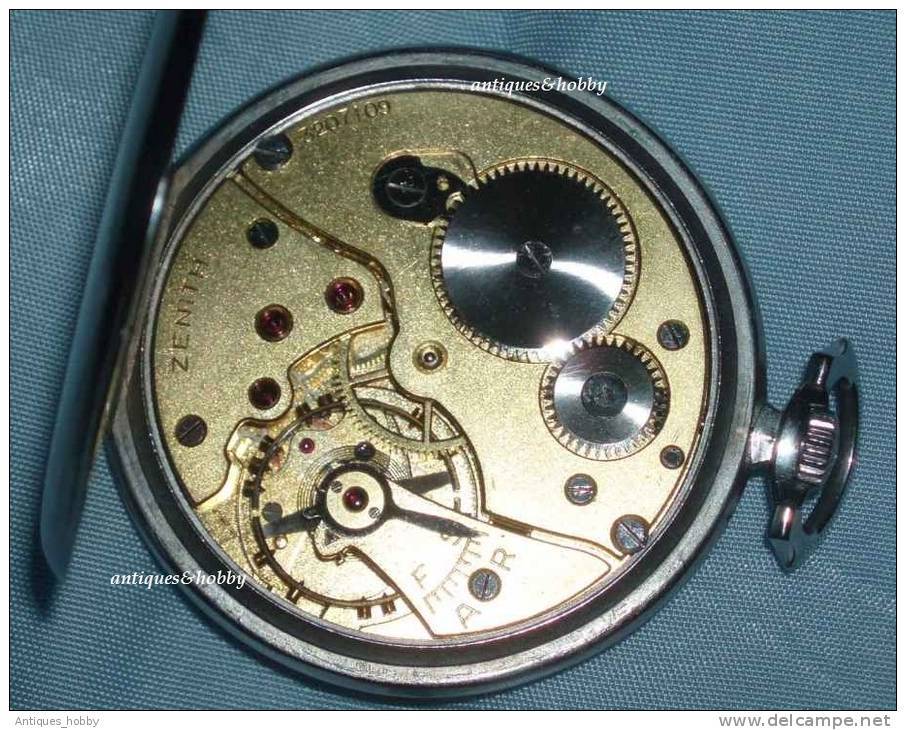Again, the Zenith is much closer to the Longines and the Omega. The 16s Waltham Ball and the 16s Hamilton 972 are somewhat similar but I can pretty much prove and guarantee that Waltham and Hamilton each made every component of each watch in their own factory. In the 1930s when the Swiss watches were made I doubt that the same could be said for the Swiss companies.
I guess I would like to make a couple of interesting points about American watchmaking. First and very important to the discussion of why some American pocket watches, especially in the early to mid 20th century seem similar is that American companies did not make their own cases. They thought it was important to standardize watch sizes so that all American 16s watches would fit in generic 16s cases made by the likes of Dueber, Philadelphia, Jas Boss etc. when you standardize watches to size the layouts look alike because certain angles etc are simply optimal. However, even having said this, the major American watch companies were set up from the beginning with the goal of mass producing all of the mechanical parts of their own watches in house. Some may have contracted out dials and with very few minor exceptions none of them made their own cases but they made their own plates and screws and springs etc. The Swiss watch industry started differently with parts and pieces being made by different families/companies with the "Name" companies doing final finishing and assembly. The Swiss began to evolve to the American system toward the end of the 19th and into the 20th centuries but with a few exceptions most Swiss "name" companies still contracted out a lot well into the 20th century. Even if they had their own designs they contracted out more parts and pieces than the big name American companies did. Swiss politics probably dictated part of this.
The second point about American watches is the exception to the rule. That exception is brought to mind by your nice Ball Waltham. The Ball Watch company really did not make/produce/manufacture much of anything. They contracted other American companies to modify their existing watch designs to fit Ball's specifications. All Ball did, if they even did much of this, was some finishing and adjusting. On the surface, all of the 16s Balls from Waltham, Hamilton, and Illinois look close to the same. However if you look closely the parts are Hamilton or Waltham or Illinois and they mostly won't interchange. Maybe Ball was a little more..."Swiss".
Anyway, it is late here in the US Eastern Time Zone. I am tired and probably incoherent.
Best,
JohnCote


